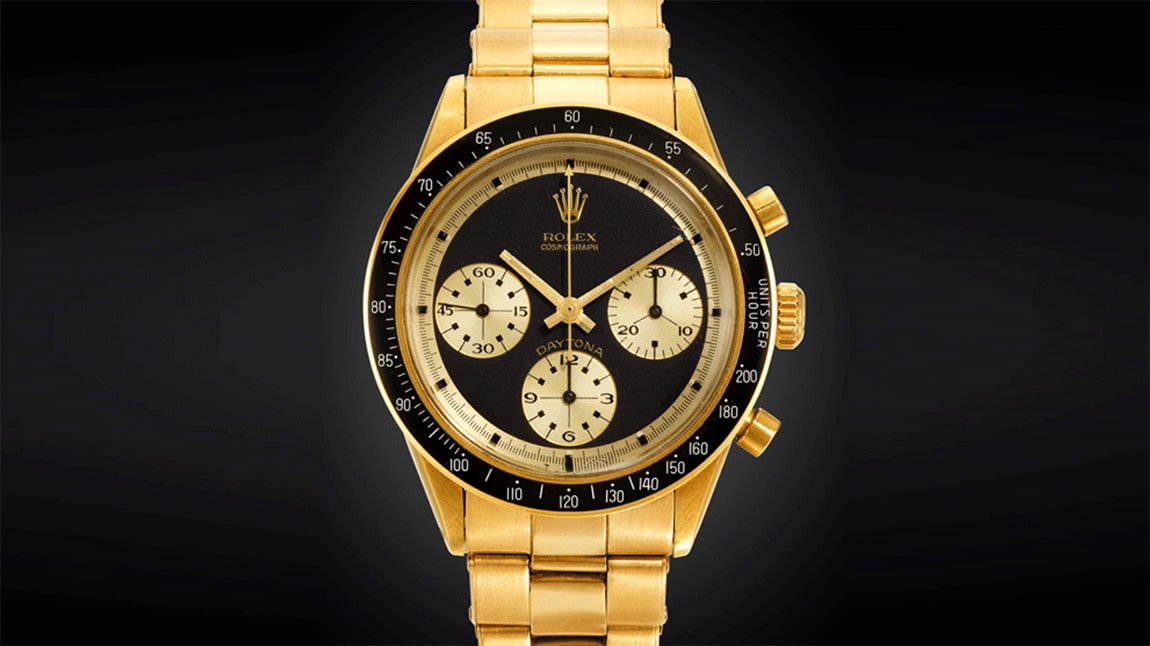
No watch brand has shaped contemporary watchmaking and collecting culture more than Rolex. In a little over a century, those five letters have become synonymous with top-tier Swiss mechanical watchmaking the world over, transcending circles of watch-loving connoisseurs and seeping into contemporary culture at every level. A historic emphasis on quality, craftsmanship and design has made the luxury watchmaker into the world’s most popular, boasting extensive waiting lists for Rolex Submariners, Datejusts, Daytonas and all their most popular models – unless, of course, you buy your Rolex or on the secondary market. Sotheby’s however is on hand to help, with a team of global specialists handpicking a wide range of Rolex watches for sale at auction around the world, as well as through its extensive online marketplace.
So it should come as no surprise that watches from every era of Rolex’s history, from the earliest days of the 20th century through to this year’s hottest releases, are highly collectible, inspire endless scholarship and push enthusiasts to the very limits of what watch collecting can be. A little bit of history, an overview of the brand’s most important creations and a few collector tips from Sotheby’s are all it takes to confidently jump into the fray yourself.
The History of Rolex and the Invention of Modern Swiss Watchmaking
The history of Rolex starts in 1905, when 24-year-old Hans Wilsdorf founded a watch distribution company in London. Pocket watches were still the order of the day, but Wilsdorf saw the writing on the wall and became an early advocate for and seller of wrist watches. A few years later he came up with the name “Rolex” on a morning carriage ride – as the legend goes – and soon Rolex was making some of the earliest wristwatches to be observatory-certified chronometers, among the strictest accuracy standards of the time.
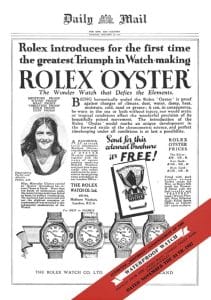
Wilsdorf’s firm would go on to pioneer a number of innovations whose impact on 20th-century watchmaking cannot be overstated. In 1926, Rolex unveiled the Oyster case, with its screw-down crown and unmatched water resistance. In 1931, the Perpetual automatic winding system was introduced, alleviating the need to manually wind those watches. In 1945, the Rolex Datejust revolutionized the use of a date display in a wristwatch meant for everyday wear. And this is just the beginning.
The 1950s through the ’70s are considered by many collectors to be the original golden age of Rolex watchmaking. It was during this period that genuine icons like the Submariner (released 1953), GMT-Master (1954), Explorer (1963) and Daytona (1963) were all introduced to the market. These are now considered the bread-and-butter of Rolex collecting, no matter what era of watches you’re talking about. Quirkier models like the Rolex Milgauss (1956) and Rolex Explorer II (1971) were also released, and though it took longer for them to find their audiences, they now have die-hard fans of their own.
As watchmaking continued to improve in the 1980s and the ’90s, particularly with regards to the use of materials and computer-aided design and production, evolutions of these watches emerged. The so-called five-digit references – like the reference 16710 Rolex GMT-Master II, the reference 16610 and 14060 Rolex Submariners and reference 16520 Rolex Daytona – introduced new movements, nonradioactive luminous material for dials, sapphire crystals and more. These are, in some ways, the first truly modern Rolex watches, and over the last few years they have become every bit as collectible as their older cousins.
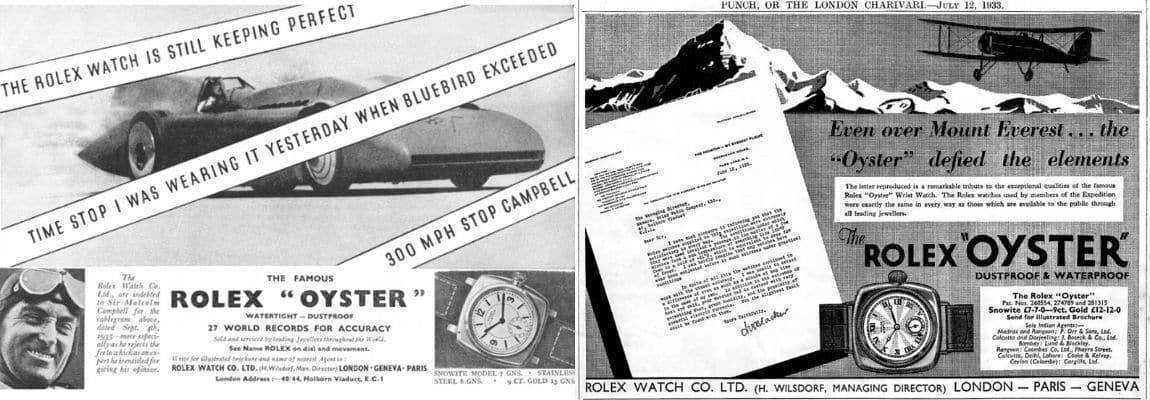
“The stories that these watches hold is the source of endless inspiration,” says Vincent Brasesco, VP, Director of Digital Strategy and Specialist in Sotheby’s watch department. “There was an incredible ad Rolex ran years ago, saying, ‘It doesn’t just tell time. It tells history.’ That really sums it up. What other watch has been worn by astronauts, athletes, explorers and icons of the big screen alike? You and I will most likely never salvage a shipwreck, but we can own the watch that did. That’s the magic.”
The Most Iconic Rolex Models
Rolex Submariner
Most instantly recognizable is the Rolex Submariner, or Sub. In many ways, this watch has served as the archetype for the entire category of dive watches, past and present. A tool watch designed for underwater use by military and recreational divers, the Submariner features highly legible hands and lume plots, accompanied by a rotating timing bezel. Black remains the most popular Submariner color, but a number of colored dials and bezels have emerged over the years, including green (Kermit, Starbucks, Hulk) and blue (Bluesy, Smurf). This distinction also points to another important tradition for any Rolex buyer to be aware of – namely the use of nicknames to identify their favorite models.
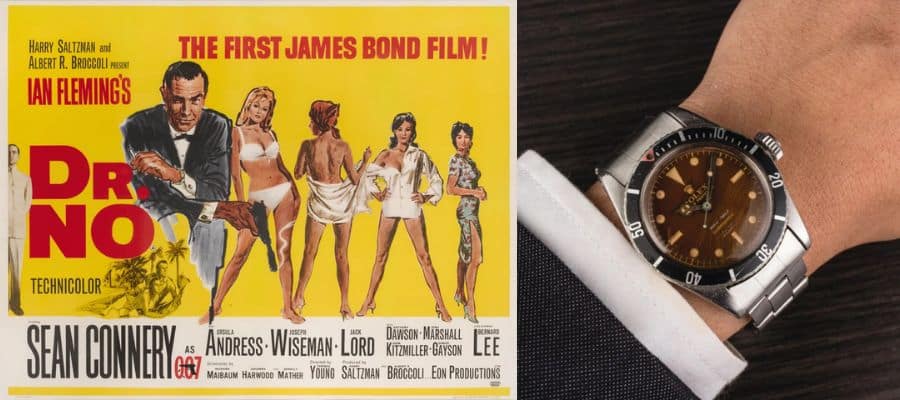
Less than a decade after the model was introduced, Sean Connery’s personal Rolex Submariner appeared on the wrist of James Bond in 1962’s Dr. No, cementing its place in the pantheon of popular culture. Early examples, such as the reference 6538 sported by 007 (nicknamed the Big Crown by aficionados), are highly collectible and can fetch huge prices on the market. But part of the Submariner’s enduring appeal is that every version, from these “holy grail” pieces through the currently available reference 124060, carries the same spirit. There’s truly a Submariner for every collection.
Holy Grails: Early Submariners, such as references 6538 and 6200, feature larger winding crowns and slightly bolder designs, hence their Big Crown and King Sub nicknames, respectively.
Modern Classics: For those looking for a perfect middle ground between a vintage and modern Sub, a neovintage piece like the reference 16610 offers old-school design with contemporary materials and build quality.
Next Generation: The current no-date Submariner, reference 124060, has new case dimensions, a cutting-edge movement and a miles-long waitlist at retailers, making it instantly collectible and highly desirable at auction.
Rolex GMT-Master
Descending a bit deeper into the collecting rabbit hole, one finds the GMT-Master, with its colorful 24-hour bezel for tracking another time zone. (The blue and red bezel earned the original its nickname, Pepsi, but you’ll also find the Coke, Sprite, Root Beer and some non-soda-themed options, like the Batman and Batgirl.) As you move across the sky, you simply twist the bezel to line up the correct hour with the 24-hour hand, and you’ll be ready before wheels-down. This GMT (or Greenwich Mean Time) complication is a Rolex invention created for Pan American World Airways, whose pilots needed a time-keeping tool for long-haul flights. These watches were present on some of the earliest transcontinental Pan Am flights, including the historic first flight from New York to Moscow in 1968, and are every bit as emblematic of the jet age as New York City’s TWA Terminal and the Concorde itself.
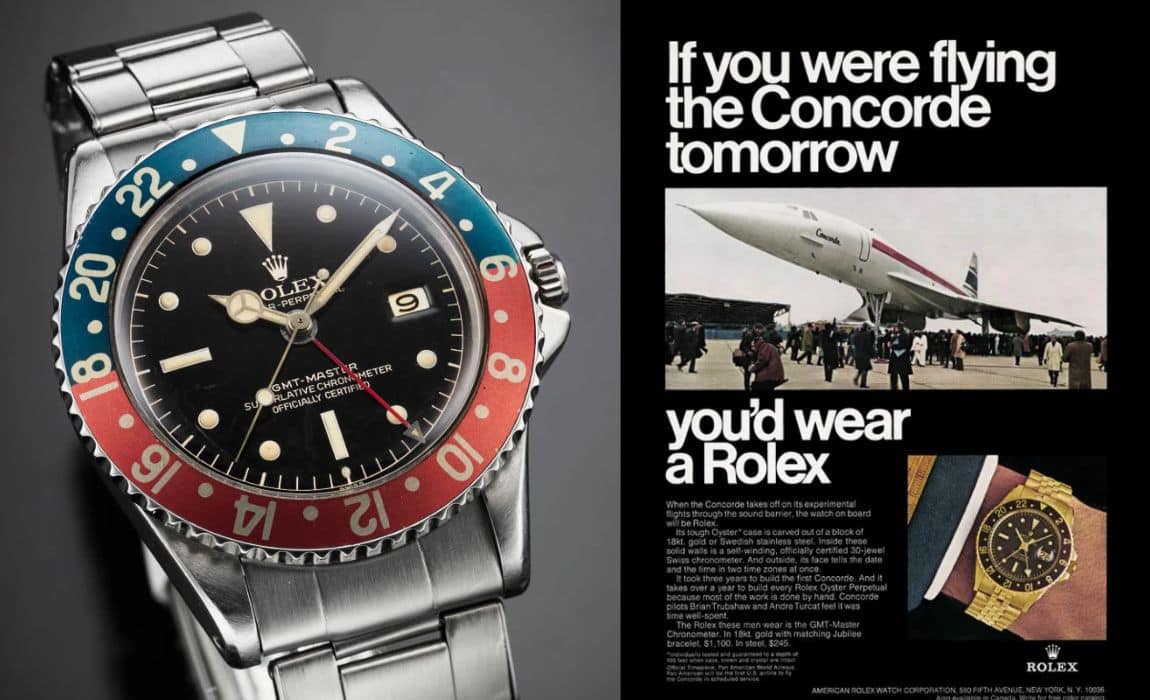
Holy Grails: The first Rolex GMT was the reference 6542, which featured a blue and red Bakelite bezel insert for the 24-hour scale. Because these are slightly radioactive, they were swapped for aluminum bezel inserts during service, making originals extremely rare.
Modern Classics: The reference 16760 introduced the GMT-Master II, which added a jumping hour hand that lets the wearer more easily track a third timezone (one via the main hour hand, one via the adjustable 24-hour hand and one via the bezel).
Next Generation: The Batman (reference 116710BLNR) is one of the most desirable modern GMT-Master II models, with its black and blue bezel, and either Oyster or Jubilee bracelet.
Rolex Day-Date
The Day-Date is a different sort of Rolex watch, a bit more dressed-up and buttoned-down, but no less sturdily crafted. It’s hard to believe that when it was introduced in 1956 this was the very first watch to show the date along with a fully spelled out day of the week, but it’s yet another world first Rolex can add to its very long list.
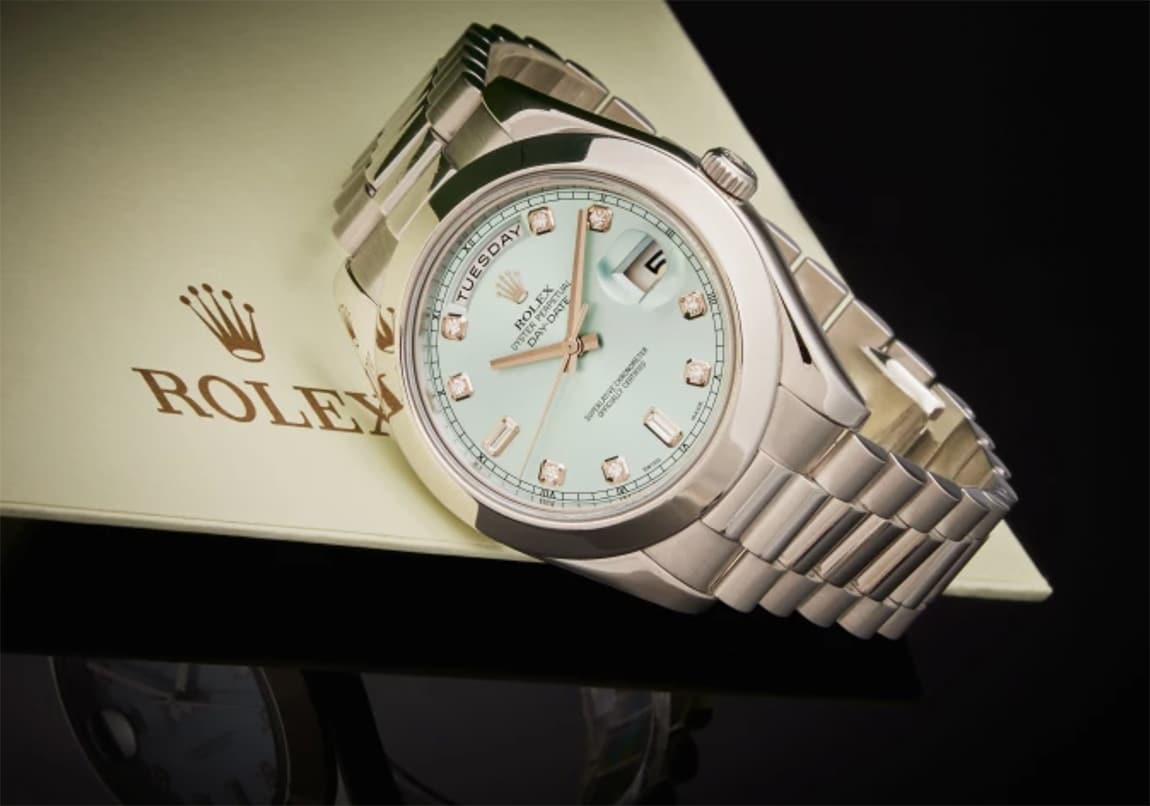
There are countless Day-Date variations available, in all manner of steel, gold and platinum combinations, with myriad dial options. Any Day-Date (or Day Date, as you’ll find it commonly spelled) within a collection is therefore immensely expressive and personal. And the number of world leaders, movie stars and athletes who have sported them over the years is too high to imagine. There’s a reason its nickname is the President – a yellow-gold Day-Date has famously graced the wrists of presidents from Lyndon B. Johnson and Richard Nixon to Ronald Reagan and Bill Clinton, along with those of countless other global political leaders.
Holy Grails: Because there are so many variants of the Day-Date, the most collectible pieces are those with provenance, whether that’s in the form of a special-order dial (like those with the Khanjar on them) or a famous original owner. Quality and uniqueness are king.
Modern Classics: From the 1970s through the mid-90s, Rolex produced small batches of Day-Dates with brightly coloured enamel dials. These Stella Dial watches are a collecting niche all their own.
Next Generation: While traditionally a 36mm-diameter watch, the Day-Date is now available in a larger 40mm size, and Rolex has been creating lots of interesting dial variants at this scale that will surely become collector favourites as they age.
Rolex Daytona
But the king of Rolex collecting is undoubtedly the Cosmograph Daytona, first introduced in 1963 and now known as just the Daytona. A chronograph with three subdials and a tachymeter on the bezel, the Daytona was designed for race car drivers (it’s named after the 24 Hours of Daytona race in Florida) and today represents the pinnacle of Rolex sport watches. Today the Daytona is perhaps the most sought-after luxury sports watch globally. This is particularly true for the white-dialed Rolex Daytona Panda, easily one of the most recognizable watches in the world.
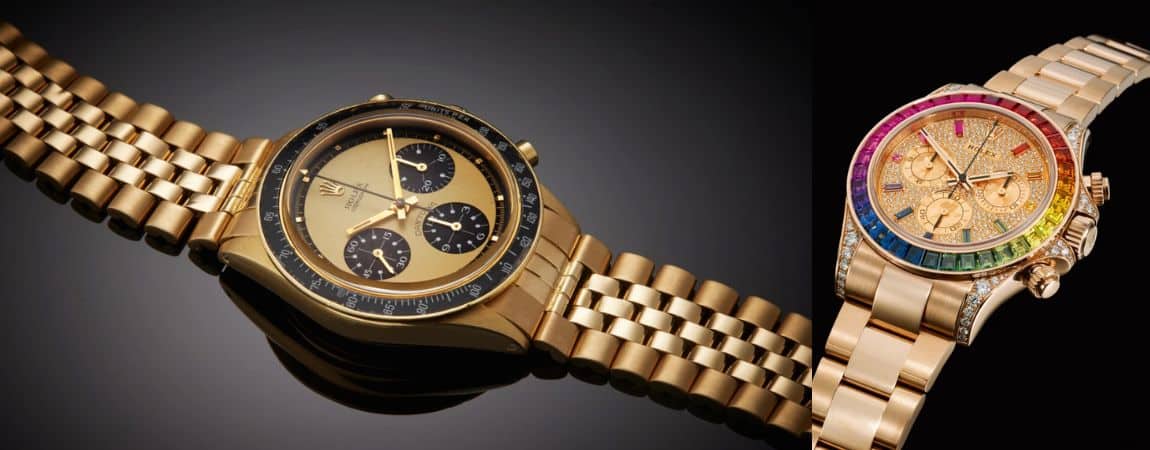
Collectors enjoy obsessing over the tiniest details, with a subtle change in a dial font or a hallmark on the case back sometimes being the difference between a relatively common watch and a once-in-a-lifetime find. For many collectors, the pinnacle of the model is the Paul Newman Daytona, defined by its exotic dial with small squares on the sub-dials and so-named because of the configuration famously worn by the actor and philanthropist himself. It is the perfect coming together of watch collecting and popular culture.
Holy Grails: An immensely desirable yellow-gold, Rolex Daytona Paul Newman “John Player Special” (reference 6241) holds the special distinction of being the most expensive Rolex watch ever sold at auction by Sotheby’s.
Modern Classics: In 1988, Rolex introduced the references 16520, 16523 and 16528 Daytonas, all of which utilized modified Zenith El Primero chronograph movements (a first for Rolex). These movements would remain in use until circa 2000 and the watches can be spotted by their five-digit reference numbers beginning with 165XX.
Next Generation: The reference 126529LN Le Mans Daytona was created to celebrate the 24 Hours of Le Mans auto race. It is white gold, the dial pays homage to the Paul Newman dials of old and it was produced for just one year, from 2023-24. This all combines to make it the most collectible modern Daytona.
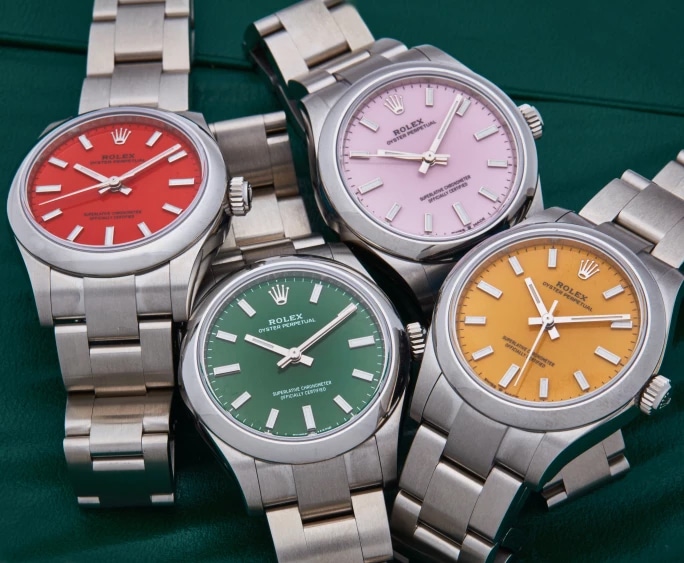
And this all barely scratches the surface of what Rolex offers contemporary collectors from its nearly 120-year history. See, for example, the Rolex Oyster Perpetual, which despite its classic styling is perhaps Rolex’s most playful line – it features cheerful colors (such as the yellow dial, no longer in production) and whimsical dials. From the also-iconic Datejust to lesser-known models like the Rolex Yacht-Master and the Rolex Sky-Dweller, there is always something more to explore.
POSTED WITH PERMISSION. COPYRIGHT SOTHEBY’S. Click to read original article.

